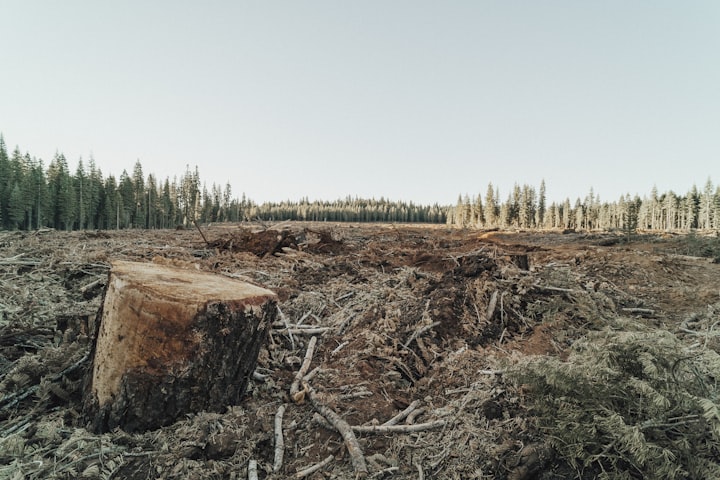The Last Tree
Imagine a world where trees have become extremely rare. Follow a character's quest to protect or plant the last remaining tree and explore the emotional connection between humans and nature.

In a world not so distant, where the landscape was barren and gray, trees had become legends, whispered stories of a time when they painted the world with green. But now, there was only one tree left—a solitary sentinel against the encroaching desert.
Lena was a young woman who had grown up hearing tales of the majestic forests her grandparents had played in. She had always felt a deep, inexplicable connection to the idea of trees, something she couldn't quite explain. It was as if her very soul longed to see one with her own eyes.
One day, while sifting through dusty books in the remnants of a forgotten library, Lena stumbled upon a faded map. It marked the location of the last tree—a secret fiercely guarded by a society known as the "Guardians of the Green."
Determined to see the last tree and protect it from the greed that had driven the world to the brink of ecological collapse, Lena embarked on a perilous journey. Armed with the knowledge of the ancient ways of the Guardians, she ventured into the desolate wasteland, facing sandstorms, scorching sun, and hostile scavengers.
Days turned into weeks, and as Lena grew closer to her destination, a sense of purpose and urgency enveloped her. The weight of responsibility pressed upon her heart, for she carried the hope of an entire world with her.
Finally, in the midst of a vast, arid plain, she saw it—a lone tree standing tall against the backdrop of the relentless desert. Its branches were gnarled, leaves sparse, but it was beautiful in its solitude. Tears welled up in Lena's eyes as she fell to her knees beside it, whispering words of gratitude and protection.
Lena knew she couldn't do this alone. She reached out to the remaining Guardians of the Green, those few who still believed in the power of nature. Together, they devised a plan to shield the tree from those who sought to exploit it.
The emotional connection between Lena and the last tree deepened with each passing day. She found solace and strength in its presence, as if it held the collective memories of all the trees that had ever graced the Earth. It was a silent witness to the changing world, a testament to the resilience of nature.
Word of the last tree and the Guardians' efforts spread like wildfire. People from all corners of the world began to rally around Lena's cause. They planted seeds.
It's essential for governments to strike a balance between economic development and environmental conservation when it comes to the felling of trees. Here are some ways in which governments can help regulate and manage tree felling to ensure sustainable practices:
1. Enact and Enforce Legislation: Governments can establish and enforce laws that govern tree felling. These laws can specify which trees can be harvested, under what conditions, and by whom. Regulations can also include restrictions on clear-cutting, protecting endangered species, and preserving critical ecosystems.
2. Forest Management Plans: Develop comprehensive forest management plans that outline strategies for sustainable forestry practices. These plans can be based on scientific research and ecological assessments, ensuring that logging activities do not harm the long-term health of forests.
3. Permitting and Licensing: Implement a permitting and licensing system for tree felling. Those engaged in logging or timber harvesting should be required to obtain licenses, which can be subject to compliance with environmental standards and best practices.
4. Monitoring and Surveillance: Establish mechanisms for monitoring and surveillance of logging activities. This can include satellite imagery, aerial surveys, and on-the-ground inspections to ensure that logging operations adhere to regulations and avoid illegal logging.
5. Reforestation and Afforestation Programs: Invest in reforestation and afforestation programs to counteract the loss of trees due to logging. Encourage or subsidize the planting of new trees to replace those that have been cut down, with an emphasis on native species.
6. **Protecting Old-Growth Forests**: Identify and protect old-growth forests, which are essential for biodiversity and carbon sequestration. Governments can implement policies that prohibit the logging of these pristine and ecologically significant areas.
7. Community Engagement: Involve local communities, indigenous groups, and stakeholders in decision-making processes related to tree felling. Their traditional knowledge and input can help strike a balance between conservation and economic needs.
8. Economic Incentives: Provide financial incentives for sustainable forestry practices. This can include tax breaks or subsidies for companies that adopt environmentally friendly logging methods or invest in sustainable technologies.
9. Research and Development: Invest in research and development to promote sustainable logging technologies and practices. This can include innovations in selective logging, reduced-impact logging, and better equipment to minimize environmental damage.
10. Education and Awareness: Launch public awareness campaigns to educate citizens, businesses, and landowners about the importance of responsible tree felling and the consequences of illegal logging.
11. **International Agreements**: Collaborate with other countries through international agreements and initiatives to combat illegal logging and promote sustainable forestry practices on a global scale.
12. Penalties for Illegal Logging: Enforce strict penalties for illegal logging, which can include fines, confiscation of equipment, and imprisonment. A robust legal framework with severe consequences can act as a deterrent.
13. Certification Systems: Support and promote certification systems like the Forest Stewardship Council (FSC), which help consumers identify products derived from sustainably managed forests.
By implementing these measures, governments can play a vital role in ensuring responsible and sustainable tree felling practices that balance the need for economic development with the preservation of vital ecosystems and the mitigation of climate change.
About the Creator
Julian Evans
1.knowledge and learning 2.Empathy and understanding
3.personal enjoyment






Comments (1)
Wonderful! Well written!